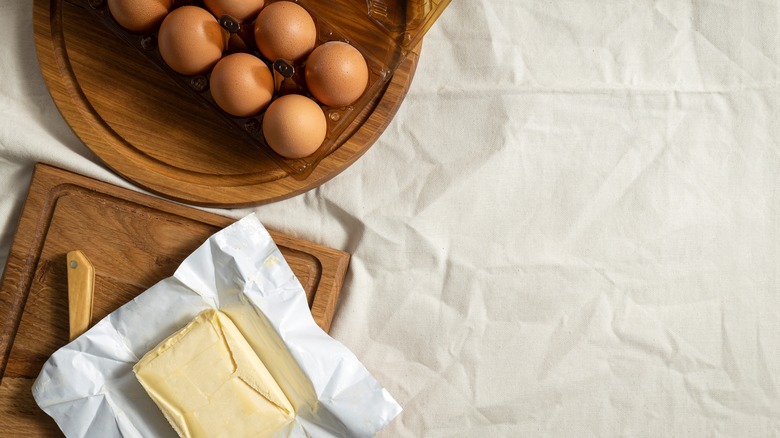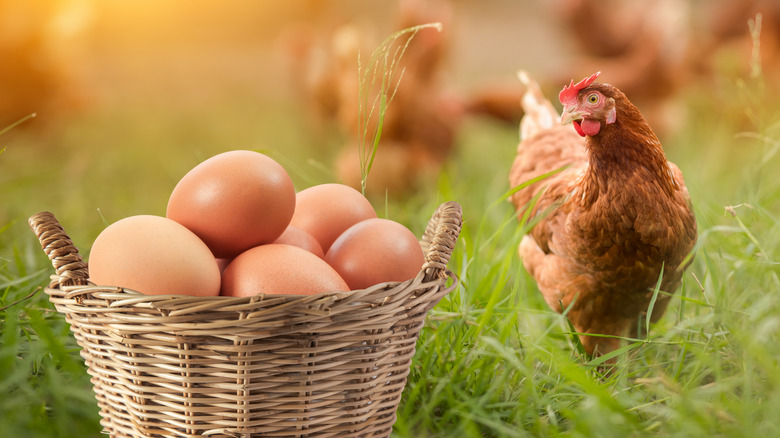The Irish Method That Uses Butter To Preserve Eggs
When you think of Irish food staples, robust potatoes or caramelly Irish whisky may be the first things to cross your mind. But, Ireland is also known for their dairy farming industry, which produces some of the best dairy products in the world. According to Good Food Ireland, the island's rainy weather produces healthy grass that uniquely flavors their dairy products. The site notes that this grass is the key component in giving Irish milk its unique flavor and rich texture.
Ireland has become globally recognized when it comes to its uniquely creamy cheeses, custardy ice creams, and refreshing varieties of milk. Irish butter, in particular, has also made a name for itself. The Dairy Council of Northern Ireland encourages the use of farm fresh milk for many products, like old-fashioned hand-rolled butter, according to Good Food Ireland. Many people prefer Irish butter brands, like Kerrygold, over other butters, because of their spreadable texture, richer flavor, and better nutritional profile.
So, it may be surprising to learn that many Irish farmers slather their eggs in the prized stuff. While some may see it as a waste of precious butter, it has historically been used as a preservation agent over long winters.
Irish buttered eggs
Buttered eggs were originally invented out of necessity. According to Atlas Obscura, Irish farmers smothered eggs in butter to keep them fresh through the cold seasons when fewer eggs are laid. If applied while the eggs are still warm, the butter coating will help the fragile shells set and limit the exposure to oxygen. These eggs stay good for about six months with the protective layer.
Not only does the butter give the eggs a glossy appearance, but the flavor can actually seep through the shells, giving the eggs a richer taste (via Atlas Obscura). These eggs were once so popular that their exportation was a pillar of Ireland's economy as recently as 2006, according to Andrea Cully and Mairtin Mac Con Iomaire, food history scholar at Technological University Dublin. However, today the practice has mostly vanished due to the tedious by-hand process and other more efficient preservation techniques becoming available. But, they are still possible to find in certain Irish markets and are regarded as a delicacy (via Saveur).

